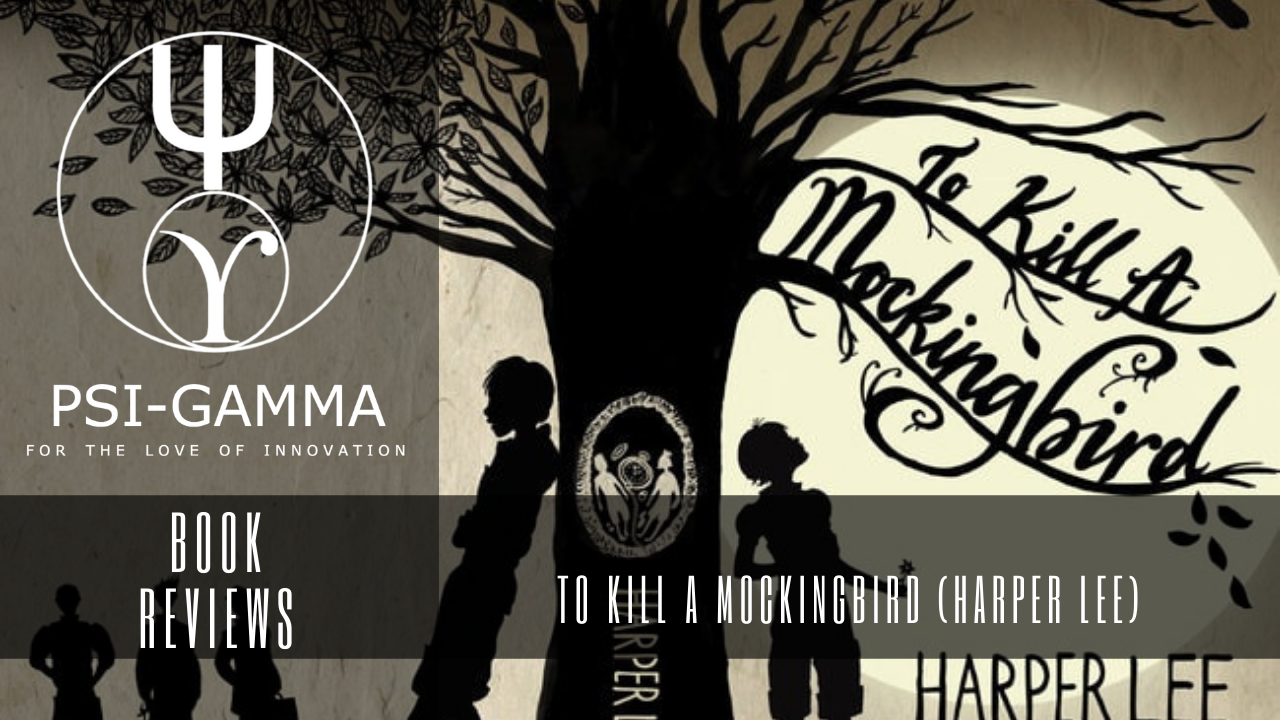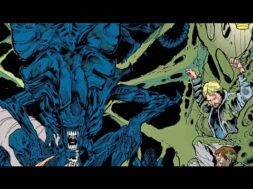
To Kill a Mockingbird is a novel by Harper Lee published in 1960. Instantly successful, widely read in high schools and middle schools in the United States, it has become a classic of modern American literature, winning the Pulitzer Prize. The plot and characters are loosely based on Lee’s observations of her family, her neighbors and an event that occurred near her hometown of Monroeville, Alabama, in 1936, when she was ten.
Despite dealing with the serious issues of rape and racial inequality, the novel is renowned for its warmth and humor. Atticus Finch, the narrator’s father, has served as a moral hero for many readers and as a model of integrity for lawyers. The historian Joseph Crespino explains, “In the twentieth century, To Kill a Mockingbird is probably the most widely read book dealing with race in America, and its main character, Atticus Finch, the most enduring fictional image of racial heroism.” As a Southern Gothic and Bildungsroman novel, the primary themes of To Kill a Mockingbird involve racial injustice and the destruction of innocence. Scholars have noted that Lee also addresses issues of class, courage, compassion, and gender roles in the Deep South. The book is widely taught in schools in the United States with lessons that emphasize tolerance and decry prejudice. Despite its themes, To Kill a Mockingbird has been subject to campaigns for removal from public classrooms, often challenged for its use of racial epithets. In 2006, British librarians ranked the book ahead of the Bible as one “every adult should read before they die”.
Plot summary
The story, told by the six-year-old Jean Louise Finch, takes place during three years (1933–35) of the Great Depression in the fictional “tired old town” of Maycomb, Alabama, the seat of Maycomb County. Jean Louise Finch, nicknamed Scout, lives with her older brother Jeremy, nicknamed Jem, and their widowed father Atticus, a middle-aged lawyer. Jem and Scout befriend a boy named Dill, who visits Maycomb to stay with his aunt each summer. The three children are terrified, yet fascinated by their neighbor, the reclusive Arthur “Boo” Radley. The adults of Maycomb are hesitant to talk about Boo, and few of them have seen him for many years. The children feed one another’s imagination with rumors about his appearance and reasons for remaining hidden, and they fantasize about how to get him out of his house. After two summers of friendship with Dill, Scout and Jem find that someone is leaving them small gifts in a tree outside the Radley place. Several times the mysterious Boo makes gestures of affection to the children, but, to their disappointment, he never appears in person.
Judge Taylor appoints Atticus to defend Tom Robinson, a black man who has been accused of raping a young white woman, Mayella Ewell. Although many of Maycomb’s citizens disapprove, Atticus agrees to defend Tom to the best of his ability. Other children taunt Jem and Scout for Atticus’s actions, calling him a “nigger-lover”. Scout is tempted to stand up for her father’s honor by fighting, even though he has told her not to. One night, Atticus faces a group of men intent on lynching Tom. This crisis is averted in an unexpected manner: Scout, Jem, and Dill show up, and Scout inadvertently breaks the mob mentality by recognizing and talking to a classmate’s father, and the would-be lynchers disperse.
Atticus does not want Jem and Scout to be present at Tom Robinson’s trial. No seat is available on the main floor, but the Rev. Sykes invites Jem, Scout, and Dill to watch from the colored balcony. Atticus establishes that Mayella and Bob Ewell are lying. It is revealed that Mayella made sexual advances toward Tom, subsequently resulting in her being beaten by her father. The townspeople refer to the Ewells as “white trash” who are not to be trusted, but the jury convicts Tom regardless. Jem’s faith in justice is badly shaken. Atticus is hopeful that he can get the verdict overturned, but Tom is shot and killed while trying to escape from prison.
Despite Tom’s conviction, Bob Ewell is humiliated by the events of the trial, Atticus explaining that he “destroyed [Ewell’s] last shred of credibility at that trial.” Ewell vows revenge, spitting in Atticus’ face, trying to break into the judge’s house and menacing Tom Robinson’s widow. Finally, he attacks Jem and Scout while they are walking home on a dark night after the school Halloween pageant. Jem suffers a broken arm in the struggle, but amid the confusion, someone comes to the children’s rescue. The mysterious man carries Jem home, where Scout realizes that he is Boo Radley.
Sheriff Tate arrives and discovers Ewell dead from a knife wound. Atticus believes that Jem was responsible, but Tate is certain it was Boo. The sheriff decides that, to protect Boo’s privacy, he will report that Ewell simply fell on his own knife during the attack. Boo asks Scout to walk him home. After she says goodbye to him at his front door, he disappears, never to be seen again by Scout. While standing on the Radley porch, Scout imagines life from Boo’s perspective.
Autobiographical elements
Lee said that To Kill a Mockingbird is not an autobiography, but rather an example of how an author “should write about what he knows and write truthfully”. Nevertheless, several people and events from Lee’s childhood parallel those of the fictional Scout. Lee’s father, Amasa Coleman Lee, was an attorney, similar to Atticus Finch, and in 1919, he defended two black men accused of murder. After they were convicted, hanged and mutilated, he never tried another criminal case. Lee’s father was also the editor and publisher of the Monroeville newspaper. Although more of a proponent of racial segregation than Atticus, he gradually became more liberal in his later years. Though Scout’s mother died when she was a baby, Lee was 25 when her mother, Frances Cunningham Finch, died. Lee’s mother was prone to a nervous condition that rendered her mentally and emotionally absent. Lee’s older brother Edwin was the inspiration for Jem.
Lee modeled the character of Dill on Truman Capote, her childhood friend known then as Truman Persons. Just as Dill lived next door to Scout during the summer, Capote lived next door to Lee with his aunts while his mother visited New York City. Like Dill, Capote had an impressive imagination and a gift for fascinating stories. Both Lee and Capote loved to read, and were atypical children in some ways: Lee was a scrappy tomboy who was quick to fight, and Capote was ridiculed for his advanced vocabulary and lisp. She and Capote made up and acted out stories they wrote on an old Underwood typewriter that Lee’s father gave them. They became good friends when both felt alienated from their peers; Capote called the two of them “apart people”. In 1960, Capote and Lee traveled to Kansas together to investigate the multiple murders that were the basis for Capote’s nonfiction novel In Cold Blood.
Down the street from the Lees lived a family whose house was always boarded up; they served as the models for the fictional Radleys. The son of the family got into some legal trouble and the father kept him at home for 24 years out of shame. He was hidden until virtually forgotten; he died in 1952.
The origin of Tom Robinson is less clear, although many have speculated that his character was inspired by several models. When Lee was 10 years old, a white woman near Monroeville accused a black man named Walter Lett of raping her. The story and the trial were covered by her father’s newspaper, which reported that Lett was convicted and sentenced to death. After a series of letters appeared claiming Lett had been falsely accused, his sentence was commuted to life in prison. He died there of tuberculosis in 1937. Scholars believe that Robinson’s difficulties reflect the notorious case of the Scottsboro Boys, in which nine black men were convicted of raping two white women on negligible evidence. However, in 2005, Lee stated that she had in mind something less sensational, although the Scottsboro case served “the same purpose” to display Southern prejudices. Emmett Till, a black teenager who was murdered for allegedly flirting with a white woman in Mississippi in 1955, and whose death is credited as a catalyst for the Civil Rights Movement, is also considered a model for Tom.








![Liked on YouTube: Gamma Wave 2.0 | Pure Gamma Frequency [8 Hour Binaural Beat]](https://psi-gamma.com/relaxation/wp-content/uploads/2023/07/liked-on-youtube-gamma-wave-2-0-253x189.jpg)




